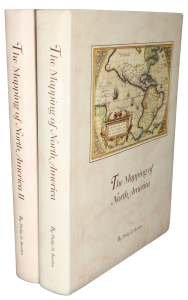Rare Maps and Prints
- World & Celestial
- North America
- West Indies, South & Central America
- British Isles
- British Isles
- English counties
- Large-scale
- Bedfordshire
- Berkshire
- Buckinghamshire
- Cambridgeshire
- Cheshire
- Cornwall
- Cumberland
- Derbyshire
- Devon
- Dorset
- Durham
- Essex
- Gloucestershire
- Hampshire
- Herefordshire
- Hertfordshire
- Huntingdonshire
- Islands
- Kent
- Lancashire
- Leicestershire
- Lincolnshire
- Middlesex
- Norfolk
- Northamptonshire
- Northumberland
- Nottinghamshire
- Oxfordshire
- Rutland
- Shropshire
- Somerset
- Staffordshire
- Suffolk
- Surrey
- Sussex
- Warwickshire
- Westmoreland
- Wiltshire
- Worcestershire
- Yorkshire
- Wales
- Scotland
- Ireland
- Western Europe
- Eastern Europe
- Middle East
- Africa
- Asia
- Australasia & Pacific
- Decorative Prints
- Title Pages
Mr. Philip D. Burden
P.O. Box 863,
Chalfont St. Giles, Bucks HP6 9HD,
UNITED KINGDOM
Tel: +44 (0) 1494 76 33 13
Email: enquiries@caburden.com
John Cary (1755-1835) and descendants were possibly the most prolific publishers of cartography around the turn of the nineteenth century. Cary is noted for the clarity of detail in his maps and was the first to use the Greenwich meridian. In 1787-89 Cary published the ‘New and Correct English Atlas’ which proved immediately successful. In 1792 he published a separately issued wall map in eighty-one sheets. An example of it is found in the British Library (Maps *1130.2). Although strictly a wall map, it is best known through its publication in 1794 as an atlas with all eighty-one sheets bound in. The whole measures approximately 1775 x 2235 mm. and is drawn on a scale of 5 miles to the inch. It is widely recognised as the first English atlas to be published using Greenwich as the Prime Meridian.
In 1796 Cary first published this reduction which was more manageable. It similarly utilizes Greenwich as the Prime Meridian. This map extends as far north as Edinburgh and gives extensive detail of the country at the time. An interesting list below the title records all those parts of counties detached from the main. An Explanation appears lower left. The whole is drawn at the scale of 15 miles to an inch. There were a number of later editions of the map, usually distinguished by the ‘corrected to the Year …’ added to the imprint below. Here it reads 1832. The last known edition was in 1844.
According to Smith the map went on to be ‘used in 1876 by the Tinley Brothers of the Strand as the base for one of the earliest cycling map’. Provenance: original seller’s label pasted on slipcase ‘J. & J. Thomson Booksellers & Bookbinders 20 Market St. Manchester’, these would be James and Joseph Thomson, trading from 1814 to 1855 at least; manuscript ownership mark on the verso on linen ‘Alison Rigg Manchester 1833’. Fordham (1925a) pp. 54-6; Smith, David (1988) p. 44; Worms & Baynton-Williams (2011).
In 1796 Cary first published this reduction which was more manageable. It similarly utilizes Greenwich as the Prime Meridian. This map extends as far north as Edinburgh and gives extensive detail of the country at the time. An interesting list below the title records all those parts of counties detached from the main. An Explanation appears lower left. The whole is drawn at the scale of 15 miles to an inch. There were a number of later editions of the map, usually distinguished by the ‘corrected to the Year …’ added to the imprint below. Here it reads 1832. The last known edition was in 1844.
According to Smith the map went on to be ‘used in 1876 by the Tinley Brothers of the Strand as the base for one of the earliest cycling map’. Provenance: original seller’s label pasted on slipcase ‘J. & J. Thomson Booksellers & Bookbinders 20 Market St. Manchester’, these would be James and Joseph Thomson, trading from 1814 to 1855 at least; manuscript ownership mark on the verso on linen ‘Alison Rigg Manchester 1833’. Fordham (1925a) pp. 54-6; Smith, David (1988) p. 44; Worms & Baynton-Williams (2011).
CARY, John
Cary's Reduction of his Large Map of England and Wales, with part of Scotland; Comprehending the whole of the Turnpike Roads, With the Great Rivers and the Course of the different Navigable Canals ...
J. Cary Engraver & Mapseller No. 86 St. James's Street, London, 1832
770 x 630 mm., dissected and laid on contemporary linen, early outline colour, marbled endpapers, with original publishers marbled paper open slipcase, with publishers paper title label and further label of original sellers ‘J. & J. Thomson’, in good condition.
Stock number: 9969
SOLD






